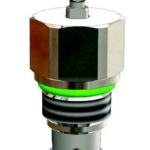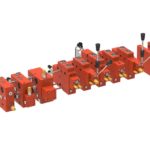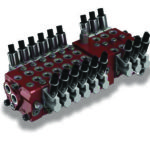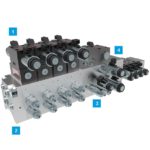By Josh Cosford, Contributing Editor
Although many valves have a manual adjustment, as the knob on a flow control or the hex screw on a relief valve, we generally consider a manual valve to be a directional valve operated by a lever, button or knob. Many hydraulic systems run exclusively with manual valves, like your everyday logsplitter. A logsplitter makes sense when you consider the operator stands at the machine loading wood to split, but not every directional valve makes sense to be offered with manual control.
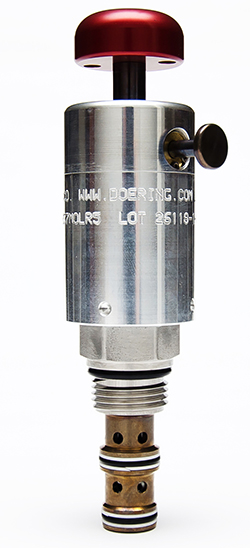
Manual valves work best when located on a machine in a convenient location that best suits the operator. For example, suppose the primary functions of the machine are not accessible to the operator. In that case, it makes no sense for those controls to be manual valves and are best suited for either pilot operated or solenoid valves. As well, it’s clear that automated functions cannot make use of manual valves in any way.
So long as most machine functions may be safely actuated from a convenient location for the operator, manual valves are appropriate. Where manual valves make absolute sense are with mobile machinery, most of which provide an operator with a convenient perch to view the workspace around. Modern, economically priced excavators, tractors and skid steer loaders etc., provide the perfect home for lever valves. Although more advanced machinery employs electronic levers and switchgear, most of those are expensive investments.
Installing lever valves to operate on- and off-highway machinery makes sense and surprises no one. However, manual valves make the perfect choice for so many other, less common control applications. Because most industrial controls systems use electronic or electrical control to operate solenoid or proportional valves, the loss of electrical power means the loss of hydraulic function.
Manual valves installed in critical locations to support electrically operated functions offer a backup when the power goes out. Accumulators offer hydraulic energy, which we size to operate the essential backup functions, such as the open mold function on an injection molding machine. In addition, some manufacturers offer lever options for smaller industrial valves, such as NG6 (D03) valves, which may be mounted on standard or custom manifolds in the same location as the primary solenoid valves.
Manual valves aren’t limited to lever valves, of course. Cartridge valves offer a versatile range of product offerings with various configurations of palm buttons, rotary levers and knobs either as dedicated valves or installed onto solenoid valves as a manual override. In addition, if the entire hydraulic circuit comes contained in a custom manifold, it takes little to add a 2/2 normally closed valve to the block as a backup should electric power fail.
You don’t have to limit emergency backup functions to those powered by an accumulator. Any application suitably affected by gravity makes do with manual control should power fail. Likewise, any lifting device – man or otherwise – should have an auxiliary valve to control descent when solenoid valves no longer operate. Safety is the top priority, of course, so such functions must be combined with a fixed orifice to ensure slow descent, not at a velocity chosen by an operator.

